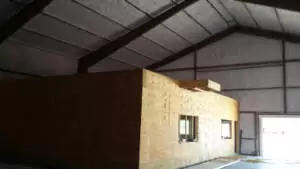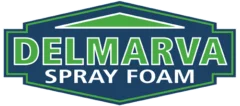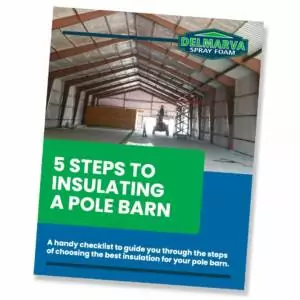In search of a man cave or a she shed to call your own? Interested in finally starting that woodworking business you’ve always dreamed about? Or maybe you need plentiful storage space for that collection you’ve been amassing over the years. Whatever the reason, pole barns are a popular building choice for many people. They are budget-friendly, durable and versatile. And they can be constructed in a short period of time, allowing them to be utilized for a myriad of purposes.
Reasons to Insulate Your Pole Barn
A pole barn’s durableness comes from their all-steel makeup. Although, unlike traditional buildings, pole barns are constructed of thin metal walls that act as conductors of heat and cold, allowing their inside temperature to fluctuate dramatically throughout the year. Depending on the intended use of your pole barn, this lack of insulation may pose a large problem.
A lack of insulation may create not only fluctuating temperatures inside your pole barn, but condensation problems and mold and mildew as well. Installing proper insulation in your pole barn will benefit you in a variety of ways:
- Regulates the temperature — Insulation regulates the interior temperature of your pole barn by managing the air flow in and out of your building. It lessens heat loss during the winter to maintain a consistently comfortable inside environment.
- Acts as a noise barrier — Barn insulation works as a noise barrier, eliminating noise bleed, so you can work late into the night without disturbing your neighbors.
- Lowers energy bills — Insulation maximizes your pole barn’s energy efficiency and lowers your energy bills.
- Protects your investments — If you choose to use your pole barn to store vehicles or other valuables, insulating the space will keep them secure and protected from both outside and inside elements such as rain, cold, extreme heat, condensation, and mold.
- Creates a vapor barrier — Installing water resistant insulation in your pole barn will protect the building from built up moisture and leaks that could cause costly damage. Insulation controls condensation and moisture accumulation in the walls and ceilings, which could lead to dripping, rot, mold and fungus.
How to Insulate Your Pole Barn

Step 1: Decide on its use — Before adding insulation, you need to know what the main purpose of your pole barn will be: workspace, animal confinement, recreation/entertainment, storage or a combination and how often it will be used.
Step 2: Understand the benefits of pole barn insulation in different areas, such as your roof or walls and decide what benefits and areas are most important to you for your purposes. For example, if you plan to use your pole barn to house animals, you may need to install roof insulation to prevent condensation instead of wall insulation since animals create a large amount of body heat.
Step 3: Plan for insulation during the design phase — Knowing where you plan to install insulation from the beginning is important because well-engineered walls facilitate insulation. And be sure to eliminate obstructions that might hinder insulation performance. You may also want to consider insulating your foundation for future use. Insulation can be installed in pre-existing pole barns, but it is much easier and more cost effective to install insulation from the start.
Step 4: Weigh your options — Decide which type of insulation best fits your insulating needs and budget: fiberglass, foam or cellulose.
Types of Insulation

An important factor to help you assess the different types of insulation is the R-value of each one. An insulation’s R-value measures its ability to resist heat transfer. The higher the R-value, the greater the insulating power. R-values can vary within each insulation type, so you will need to explore which insulation thickness is appropriate for your project.
Here is a breakdown of the top choices for pole barn insulation and some pros and cons of each.
Fiberglass Insulation:
- Comes in fiberglass batts, rolls or loose-fill
- Industry standard and most used insulation
- Provides affordable pricing with easy installation
- Lightweight
- Least expensive
- Does not provide moisture control, so further weatherproofing will be required
Foam Insulation:
- Comes in two main types — foam board or spray foam
- Foam Board — popular, cost-effective choice, great at moisture control, poor at insulating in bad weather, best if your pole barn is only used during nice weather
- Spray Foam Insulation
- Highest level of insulation; offers the most protection
- Long lasting and durable
- Water resistant
- Closed cell foam adds structural strength to walls and ceilings
- Insulates and seals air leaks in one step
- Most expensive choice
Cellulose Insulation:
- Made from recycled materials
- Blown insulation is typically used in attics
- Has a slightly higher R-value per inch than blown-in fiberglass
 A Handy Checklist to Organize Your Thoughts
A Handy Checklist to Organize Your Thoughts
We’ve created a convenient “5 Steps to Insulating a Pole Barn” checklist that you can download and print to help guide you through the steps of choosing the best insulation for your pole barn.
We Are Here to Help
At Delmarva Spray Foam in Delaware, we know that choosing the right insulation for your pole barn is an important decision. That is why we are here to help. Our expert team has been installing spray foam in buildings throughout Delaware, the eastern shore of Maryland, southern New Jersey and across the Delmarva peninsula since 2002.
We are here to answer your insulation questions and to help create the perfect pole barn for you with our insulation solutions. Regardless of your pole barn project, we are ready to get the job done right. Contact us today to get started.


 A Handy Checklist to Organize Your Thoughts
A Handy Checklist to Organize Your Thoughts
